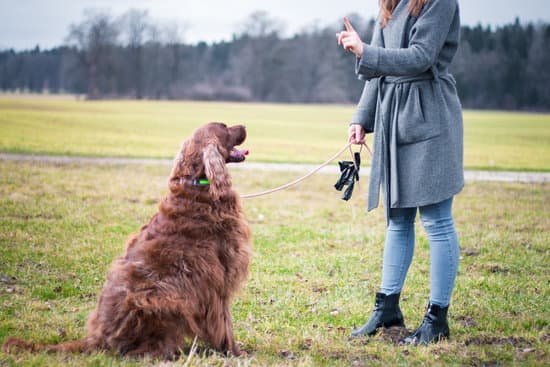Introduction
Separation Anxiety in dogs is a condition in which a dog feels anxious or fearful when separated from its owner or guardian. Symptoms often include barking, destructive behavior, and trying to escape. In extreme cases, a dog may even become physically ill. Although separation anxiety can start at any age, it’s most common among puppies and older dogs who rely heavily on their human companions for emotional support and security. Training out separation anxiety relies on building the dog’s confidence and breaking the cycle of fear and worry that arises from being left alone.
In order to train out separation anxiety in your dog, there are several steps that you will need to take. First, you should begin slowly introducing longer periods of time away from your pet so that he or she gets used to being alone without developing negative associations with leaving. This can be done by going for brief walks around the block or spending short periods of time away from home doing errands. You should also make sure that you don’t create stress before leaving each time; this means no overly dramatic goodbyes or making the departures seem like an ordeal. Additionally, it is important to ensure that your pet has plenty of stimulating things to do while they are alone (such as having toys available). Finally, reward calm behavior with treats when reuniting with your pet after being apart; this will help reinforce positive feelings associated with returning home. With these tips and patience, you can help your dog overcome their separation anxiety and enjoy life outside of your side!
How to Recognize Symptoms of Separation Anxiety
Separation anxiety in dogs can manifest in a variety of ways, such as destructive behaviors when left alone (e.g., chewing, digging, or barking), elimination in the house, pacing, panting or drooling excessively, and/or signs of depression like lack of appetite. If your dog exhibits any of these behaviors when left alone it is important to consult a veterinarian regarding their emotional state to determine if they suffer from separation anxiety.
It is also possible to observe physical cues that may indicate the onset of stress caused by separation anxiety. These can include panting, trembling, salivating, yawning or stretching more than usual before being left alone as well as avoiding eye contact with the owner prior to being left behind. Additional signs of separation anxiety can include overly clingy behavior and constantly following the owner around inside and outside the home.
What Causes Dogs to Develop Separation Anxiety?
Separation anxiety in dogs is a behavioural disorder caused by the pet’s over attachment to their owners. It often occurs when a dog is kept alone, away from its owner, beyond what they normally experience or expect. Signs of separation anxiety often occur shortly after their owners depart and can manifest in different ways: vocalizing (barking and whining), destructive behaviors, soiling indoors, escaping attempts, shaking and pacing nervously. Certain breeds may be more predisposed to developing separation anxiety due to factors like reduced human contact during the early stages of development, pre-existing genetic tendencies, environmental changes or traumatic experiences in the past. Some dogs will also develop anxious behaviours even without having been through any particular event that may have triggered it; this is when individual temperament plays a role in display of behaviours seen with separation anxiety in pet dogs.
Teaching Your Dog Positive Associations With Being Alone
One important way to train out separation anxiety in dogs is by teaching positive associations with being alone. For example, you can start by getting your dog used to being alone for brief periods of time and gradually increase the duration. Start by leaving the house briefly and gradually increase your absences until your dog is comfortable when left alone for several hours. During this process, reward your dog with treats each time you leave and when you return; this will create a positive association with being alone that your pup will remember for the future. Additionally, it would be beneficial to leave something special or comforting (such as a favorite toy or puzzle feeder) for your pup in order to reduce their feelings of fear or loneliness while you are away. Lastly, there should be no sad goodbyes; instead remain calm and upbeat when leaving so that they don’t associate any negative emotions with the act of being left alone. With patience and consistency, these methods will help train out any signs of separation anxiety in dogs.
Providing Your Dog With Stimulation While You’re Away
When training a dog out of separation anxiety it is important to give them plenty of stimulation while you’re away. Some ideas for providing your pup with entertainment include giving them puzzle toys, bones, or chew toys that take time to break down or uncover treats. You can also rotate their toys every few days so they don’t become bored from seeing the same ones over and over again. You could also give your pup a long-lasting treat such as a frozen kong stuffed with peanut butter or yogurt that will last multiple hours during your absence. Another idea is creating an interactive feeding system, where the dog has to work for their food throughout the day by exploring and turning over different boxes, tubes and mazes in order to get tasty snacks out of reach of curious noses. Ultimately it’s important to remember that when leaving the house, our pets are left without interaction so they really appreciate having plenty of activities at home to keep them entertained.
Reducing Anxiety with a Calming Environment and Routine
The first steps in training a dog with separation anxiety begin with creating an environment that is calming and secure. One of the most important aspects in this process can be establishing a consistent routine for the pet. This includes providing them with regular exercise, meals and sleep times. Ensuring they have plenty of activities to keep them busy throughout the day so that they are getting enough mental stimulation to prevent boredom is also key. Additionally, it’s important to try to reduce any stressors in the home presumably connected with their owner leaving such as putting away items of clothing or shoes associated with them before leaving, avoiding eye contact and using an encouraging tone when exiting and entering the house or talking about going out.
If necessary, confining the dog to a specific area that isn’t too small can help alleviate anxiety when pet parents are away from home as long as it isn’t a crate if being confined to one causes distress in their pet. Installing visual barriers like windows curtains may also help provide some additional sense of comfort during moments of crying or barking associated with separation anxiety and make covering windows even more effective by using black-out cellular shades for total darkness or privacy blinds for physical distance between passing traffic outdoors leading into and out of your home. Additionally, playing soothing music or white noise can be beneficial by helping reduce anxious responses commonly triggered by auditory stimuli like car horns or neighborhood dogs barking outside. Finally introducing different toys and puzzle feeders throughout their environment can greatly distract canines from feeling lonely while their owners are away and eventually reducing symptoms over time associated with separation anxiety.
Seeking Professional Help if Needed
If your dog’s separation anxiety is severe, it may be wise to seek the help of a professional. This could be a pet behaviorist, dog trainers, or even a veterinary behaviorist— all of whom can help you create an individualized plan to treat your pup’s separation anxiety. With these professionals, you can work together on specific training and behavioral plans that should ultimately reduce your pup’s separation anxiety. Along with this type of professional help, there are also other methods that may also be utilized such as talk therapy and/or medication. Talk therapy is normally conducted by licensed counselors who specialize in treating canine behavioral problems. A veterinarian can prescribe medications to help decrease anxiety specifically in short-term situations when the owner has to leave for a longer period than the pup is accustomed to. Lastly, it may be helpful to provide distraction exercises for your pup such as toys and/or puzzle feeders in order to keep their minds occupied while separated from you.
Using a Crate as Part of Separation Anxiety Training
If you are looking for a way to address your dog’s separation anxiety, one of the most effective methods is to use a crate as part of their training. A crate can provide your dog with a safe space that will help them cope better with being alone, reducing the symptoms of separation anxiety. When using a crate for separation anxiety training, it is important to create a positive interaction between your dog and the crate by providing treats and toys inside. You should also get your dog used to being in the crate without you in the room – this may take time, but stick with it until they start feeling comfortable going in on their own. To make it easier for them to adjust, introduce them to the crate gradually; let them sniff and explore before closing it for short periods of time. As your dog gets more accustomed to the crate, increase the length of time that they spend in there until eventually they become content being left alone when necessary. Once they feel comfortable enough in the space, provide plenty of mental stimulation activities like challenging puzzles or stuffed Kongs when they are inside so that you can ensure they are happy while alone instead of anxious. With patience and consistency in training, over time your pup will develop healthy coping strategies for managing feelings related to separation anxiety.
Increasing Time Away From Your Dog Gradually
One way to help alleviate your pup’s anxiety when you’re away from home is to increase the amount of time it spends away from you gradually. Start by going out for short periods of time, such as 10-15 minutes, and returning before your pup gets too distressed. As your dog becomes more accustomed to these short departures you can gradually start increasing the length of time away. Make sure that your returns are still happy and calm as this will encourage positive associations. Additionally, keep up with daily activities like walks, playtime, and training sessions during these departures. Your presence should be orderly and consistent and not have any drastic changes – no over-the-top goodbyes or exciting returns unless they’re brief so that your pup doesn’t become overly dependent on one particular person. If possible, consider having someone else stay in the home while you’re out to provide even greater consistency as well as familiar scents and sounds while they wait for you to return. Finally, make sure that plenty of chew toys are available in order to help distract and relax your dog during your absences.
Establishing Calm Greetings and Partings
One of the important steps in training out separation anxiety in dogs is establishing calm greetings and partings. When owners come home, it can be very easy to get excited and start lavishing attention on their dog which only serves to reinforce an anxious behavior. To begin desensitizing a dog with separation anxiety, owners should practice waiting for the dog to settle before greeting them. Exercise before leaving can help burn off excess energy that may lead to anxious behaviors when left alone. Additionally, having a specific routine when leaving the house as well as calming rituals during farewells can let your dog know that you are just stepping away for a short time and will be back soon. Keeping these practices consistent can help create a sense of security that their people haven’t gone away forever.
Providing Proven Prevention Tips
Separation anxiety in dogs can be very difficult to deal with and can cause your pet a lot of stress. Here are some proven tips on how to train out separation anxiety in dogs:
1. Don’t make large departures a big deal. Make any departures short, quiet and low key. Don’t give your dog attention or treats/ food before leaving, as this could become a substitute for you and lead to further distress when you leave.
2. Desensitization is key! Prepare your dog slowly by teaching him or her that you come and go repeatedly, such as during dinner time where people typically get up and move around the house often. Start with leaving for very short periods of between 10-15 minutes and gradually increase over time the length of time you are gone from the house.
3. Provide comfort items when you’re gone like ensure he or she has plenty of toys, beds, blankets or other comforts that allow them to keep themselves distracted while you’re away for longer periods of time and create positive associations between being alone and fun activities or toys!
4. Fostering companionship is another great way to reduce separation anxiety in dogs. Spending time playing with other pets allows your dog to form an attachment to someone else so they can feel comfortable while separated from you – remember though not all animals are suitable playmates so make sure they are compatible before introducing them together! If necessary do some basic training exercises prior to allowing them together that builds trust between the two creatures.
5. Activities outside of the home can also help manage anxiety such as going outsidetom occasionally walk around or visiting friends/ family who may have pets themselves (as long as their pet is compatible). This will help keep your pup stimulated mentally while away from home – which automatically reduces stress levels!
Conclusion
Trainers of dogs need to be aware that separation anxiety can be a problem in some puppies. It is important to recognize the signs and take action quickly and effectively. Some effective techniques that may help with training separation anxiety in a dog include: positive reinforcement when separated; providing environmental enrichments such as food puzzles for the dog when left alone; rewarding desired behaviors to build confidence; developing a predictable routine for activities, such as walking and playtime; agreeing on cues that let the dog know it’s time to leave; employing calming exercises like deep pressure massage; involving the use of physical barriers around the house if necessary; and consulting veterinary or canine behaviorist if progress isn’t being made. Separation anxiety will not disappear overnight, but with patience, consistency, and proper training, it can become easier over time for dog and owner alike. Training at this level takes commitment from both parties but is worthwhile in helping a beloved pet overcome any fear issues they may have.

Welcome to the blog! I am a professional dog trainer and have been working with dogs for many years. In this blog, I will be discussing various topics related to dog training, including tips, tricks, and advice. I hope you find this information helpful and informative. Thanks for reading!





